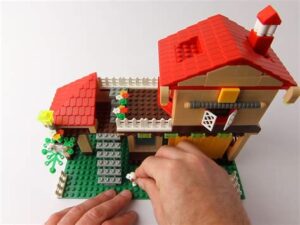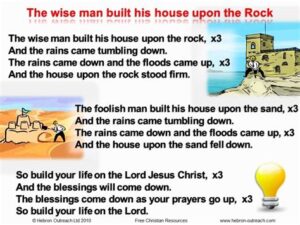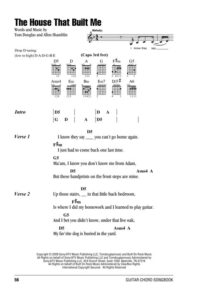Welcome to The House That Ruth Built, a remarkable landmark that stands as a testament to history, community, and inspiration. This iconic site not only honors the legacy of its namesake, but it also serves as a vibrant hub for visitors eager to learn about its rich story and cultural significance. In this article, we will take you on a journey through the fascinating history of the house, highlighting its unique features that make it a must-visit destination. Discover how this historic gem has impacted the local community and inspired future generations, while providing practical insights for those planning a visit. Join us as we delve into the heart of the house that not only shaped lives but continues to resonate in the hearts of many.
Discovering The Story Behind The House That Ruth Built
The narrative of the house that Ruth built is woven into the very fabric of its existence, reflecting not just architectural brilliance but also the dreams and aspirations of those who inhabited it. Ruth’s vision was to create a sanctuary, a space that served both as a home and a beacon of hope for the community. The story begins with Ruth’s determination to design a living space that embraced comfort while encouraging creativity and collaboration among residents.
Throughout the years, the house has become a symbol of resilience. Its walls have absorbed countless stories of joy, sorrow, innovation, and triumph. Each room tells a tale that resonates with the challenges Ruth faced and the triumphs she achieved. The journey leading up to the completion of the house was not without obstacles; it involved overcoming financial hurdles and rallying support from the community.
Local legends narrate how Ruth rallied friends and family to bring her vision to life, often emphasizing the collective effort that transformed her dream into a tangible reality. This community engagement is one of the house‘s most endearing qualities, making it a cherished landmark rather than just a physical structure. Its ongoing legacy continues to inspire local artists and community members who gather there to forge connections, celebrate creativity, and share their experiences.
As you delve deeper into the rich history surrounding the house that Ruth built, you’ll uncover stories of innovative gatherings, artistic endeavors, and communal support that emphasize the power of community in nurturing dreams. The house stands as a testament to what can be accomplished when passion and collaboration are at the forefront of a shared vision.
Key Features That Make The House A Unique Landmark
The house that Ruth built is not just an architectural marvel; it embodies a rich history and cultural significance that sets it apart from other landmarks. Here are some of the standout features that contribute to its unique charm:
- Architectural Design: The house showcases a distinctive blend of styles, incorporating both traditional and modern elements. Its intricate facades and well-planned layout invite admiration from visitors and architecture enthusiasts alike.
- Historical Significance: As a testament to Ruth’s legacy, the house serves as a historical landmark that tells the story of its time and the impact of its inhabitants on the local community.
- Landscaping and Surroundings: The carefully curated gardens and surrounding landscape enhance the beauty of the house, providing a serene environment for visitors and locals to enjoy.
- Art Installations: Inside, the house features a collection of art pieces that have been carefully selected to reflect Ruth’s aesthetic values and her connection to the art community.
- Educational Programs: The house not only serves as a tourist attraction, but it also hosts educational events and tours, fostering a deeper understanding of its significance and encouraging community engagement.
These key features combine to make the house that Ruth built a beloved landmark, capturing the essence of its historical and cultural importance, while also serving as a hub for inspiration and learning within the community.
The Impact of The House on The Local Community
The significance of the house extends beyond its architectural beauty and historical relevance; it serves as a vital part of the local community’s identity. The house has become a symbol of pride and resilience, deeply woven into the fabric of local culture.
Its influence can be felt in various aspects:
- Economic Impact: The property attracts tourists, boosting local businesses, including shops, restaurants, and hotels. The influx of visitors has created jobs and stimulated the economy in the surrounding area.
- Cultural Significance: The house hosts numerous events, such as community gatherings, cultural festivals, and educational programs. These events not only celebrate local heritage but also foster community spirit and connection.
- Educational Value: Local schools often organize field trips to the house, turning it into a living classroom where students learn about history, architecture, and the importance of preservation.
- Community Engagement: The house encourages local residents to participate in its upkeep and programming. Volunteer opportunities abound, allowing individuals to invest their time and energy into preserving this landmark.
The impact of the house on the local community is profound, as it not only enriches the lives of its residents but also transforms the area into a vibrant community hub, bridging the past with the present, while inspiring hope for the future.
How The House That Ruth Built Inspired Future Generations
The legacy of the house that Ruth built extends far beyond its walls, influencing countless individuals and communities over the years. This iconic landmark has become a symbol of resilience and inspiration, urging visitors and locals alike to carry forward its spirit of creativity and community involvement.
Many young people who have visited the house report that it ignited a passion for architecture, history, or community service within them. Programs and events held at the site often feature workshops and seminars aimed at nurturing the skills and aspirations of the next generation, encouraging them to take an active role in their own communities.
Moreover, local schools and organizations frequently incorporate trips to the house into their educational curricula, allowing students to learn firsthand about its historical significance and the values it embodies. These experiences often inspire students to get involved in community projects, emphasizing the importance of giving back and fostering a sense of belonging.
The architectural design and innovative features of the house serve as a testament to modern achievements, motivating aspiring architects and builders to pursue their dreams. Over the years, aspiring creators have organized contests and challenges inspired by the designs seen at the house, fostering creativity and ingenuity.
Through its enduring influence, the house that Ruth built stands not only as a physical landmark but also as an inspiring reminder of the power of community, creativity, and the positive impact we can have on future generations.
Visiting The House: What To Expect And Experience
When you visit the house that Ruth built, prepare yourself for a journey through history and inspiration. The experience is designed not only to educate but also to evoke a deep appreciation for the legacy left behind.
Upon arrival, visitors are often greeted by a knowledgeable guide who provides an overview of the house’s historical significance and its contributions to the community. The guided tours typically cover:
- The architectural details that distinguish the house
- A look at the key events that took place within its walls
- Insights into the lives of those who lived there and their influence on future generations
Inside the house, guests can explore various rooms that have been carefully preserved, each telling a unique story. You’ll find exhibitions featuring photographs, artifacts, and documents that illustrate Ruth’s impact on her community and beyond.
Several interactive displays engage visitors of all ages, allowing you to delve deeper into the history and significance of the house. Whether you’re a long-time admirer or a first-time visitor, there is something for everyone to discover.
Outdoor spaces surrounding the house offer beautiful gardens and seating areas where you can relax and reflect on your visit. They often host community events, workshops, and educational programs, enhancing the overall experience.
Before you leave, don’t forget to visit the gift shop, where you can find a variety of souvenirs that celebrate the house and its heritage. These keepsakes make perfect mementos to remember your enriching visit.
Overall, a visit to the house that Ruth built promises to be both enlightening and inspiring, providing valuable insights into the past while igniting passions for the future.
Frequently Asked Questions
What is meant by ‘the house that Ruth built’?
The phrase refers to Yankee Stadium, which was built during the time when Babe Ruth, one of baseball’s greatest players, was a star for the New York Yankees, ultimately contributing to the team’s legacy.
How has Babe Ruth influenced baseball?
Babe Ruth transformed baseball into a major American pastime with his exceptional hitting ability, charismatic personality, and larger-than-life presence, which attracted fans to the sport.
What are some key milestones in the construction of Yankee Stadium?
Yankee Stadium was constructed between 1920 and 1923, opening on April 18, 1923, and quickly becoming known for its impressive design and fan experience.
Why is Yankee Stadium considered a historical landmark?
Yankee Stadium is considered a historical landmark due to its iconic status in American sports history, hosting numerous important events, including World Series games and significant moments in baseball.
What sets the original Yankee Stadium apart from its modern counterpart?
The original Yankee Stadium, often referred to as ‘The House That Ruth Built,’ had a unique architectural design, including its famous facade, and was known for its intimate atmosphere compared to the modern Yankee Stadium.
What is Babe Ruth’s legacy in popular culture?
Babe Ruth’s legacy extends beyond baseball; he became a cultural icon representing not only athletic prowess but also the spirit of the Roaring Twenties and American resilience, appearing in movies, advertisements, and countless stories.
How does the story of ‘the house that Ruth built’ relate to sports today?
The story symbolizes how individual athletes can significantly impact their teams and communities, creating legacies that transcend sports and resonate through generations.





